
Roots
The quiet rustle of leaves, the gentle pull of earth, the silent wisdom held within ancient ways—these sensations echo a fundamental truth about textured hair. It is not merely a biological feature; it carries the weight of history, the whisper of ancestors, and the vibrant stories of cultures spanning continents. To truly comprehend the contemporary potential of past routines for textured hair, one must first look to the very beginnings, to the foundational knowledge that shaped how communities understood, honored, and cared for their crowning glory. This section will unearth the deep connections between hair and identity, examining the intrinsic structure of textured hair and the historical classifications that helped define its place in the world.
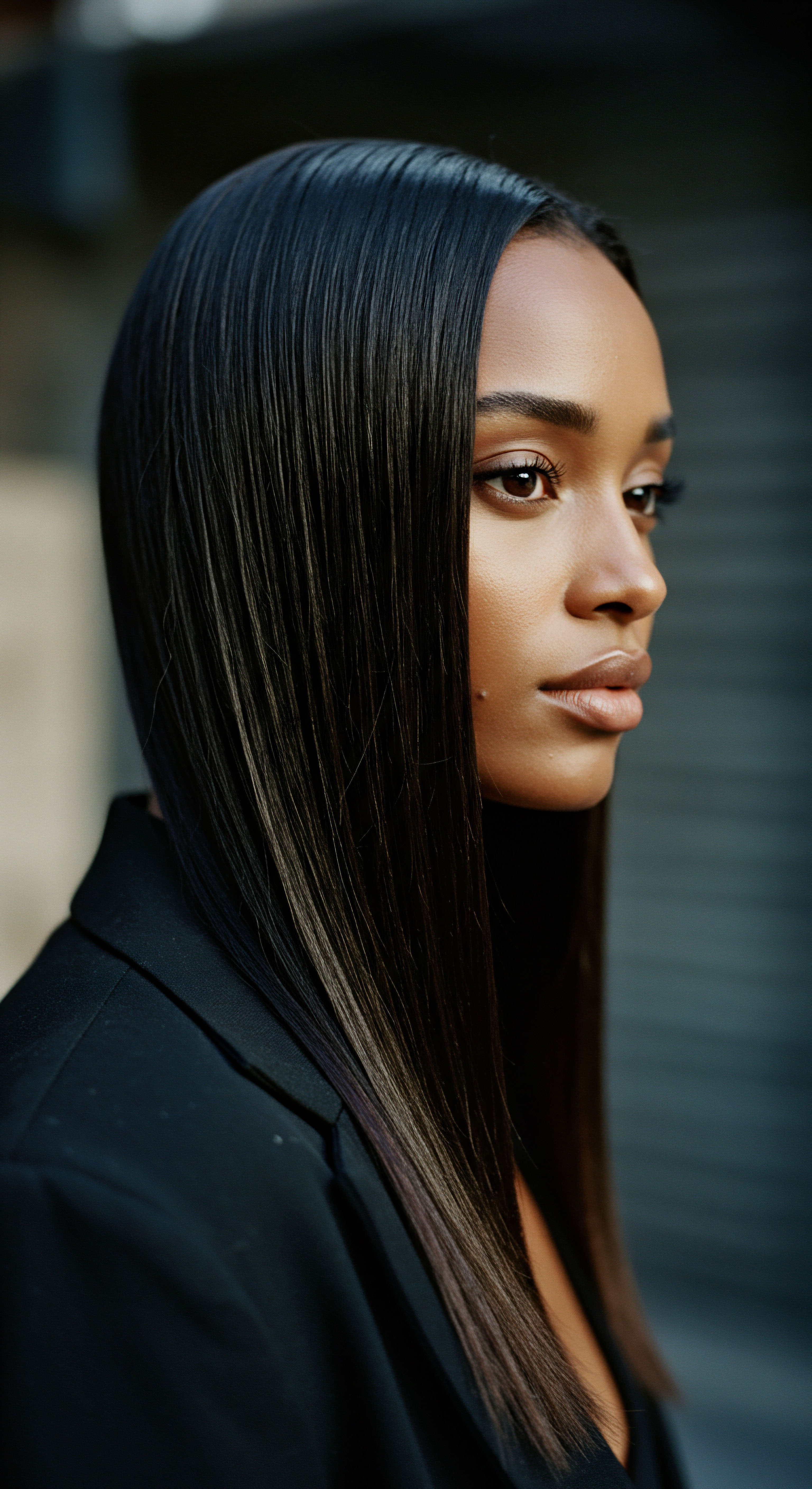
Hair Anatomy and Physiology Specific to Textured Hair
Each strand of hair, whether straight, wavy, curly, or coily, originates from a structure residing within the skin, called the hair follicle. The shape of this follicle dictates the curl pattern of the hair shaft that emerges. A perfectly round follicle yields straight hair, while an increasingly oval or flattened follicle results in waves, curls, and ultimately, tight coils. This biological distinction is particularly pronounced in textured hair, where the follicular shape is often highly elliptical, causing the hair to bend and twist as it grows.
Beyond the follicle’s influence, the internal architecture of textured hair presents unique characteristics. The hair shaft itself comprises three main layers ❉ the medulla, the cortex, and the cuticle. The outermost layer, the Cuticle, consists of overlapping scales that act as a protective shield. In highly textured hair, these scales may not lie as flatly as on straight hair, contributing to its inherent dryness and vulnerability to environmental factors.
The Cortex, the middle layer, determines hair color and strength. Intriguingly, Afro and curly hair types possess both a para and ortho cortex, meaning the structure on one side of a single hair can differ from the other. The ortho cortex, less dense and with less sulfur, typically sits on the outside of the curl, influencing the varying textures along one strand. This internal variation contributes to the distinct resilience and, at times, fragility of textured strands.
Understanding the biological foundations of textured hair provides a lens through which to appreciate its unique needs and inherent beauty.
Hair growth follows a cyclical pattern ❉ the anagen (active growth) phase, catagen (transitional) phase, and telogen (resting) phase. Genetics, overall health, and lifestyle choices all influence this cycle. For textured hair, the tightly coiled structure can sometimes lead to challenges in the hair’s natural oils, produced by the scalp, traveling down the entire length of the strand, contributing to dryness. This inherent characteristic underscores why historical practices focused so heavily on lubrication and moisture retention.

Textured Hair Classification Systems
The desire to categorize and understand hair has led to various classification systems over time. One widely recognized system, popularized by Andre Walker, divides hair into four main types ❉ straight (Type 1), wavy (Type 2), curly (Type 3), and coily/kinky (Type 4), with further subdivisions (A, B, C) based on curl pattern and tightness. While this system has gained mainstream acceptance and offers a general guide, it has also faced criticism for its potential to oversimplify the vast diversity within textured hair and for an implied hierarchy that historically valued straighter hair.
Other systems, such as LOIS and FIA, aim to offer more detailed classifications, considering not only curl patterns but also hair thickness and density. For instance, the LOIS system uses letters to describe the shape of the curl ❉ L-shaped bends, O-shaped curls, I-shaped straight hair, and S-shaped waves. These frameworks, while sometimes requiring specialized assessment, represent a move towards a more granular understanding of textured hair’s characteristics, helping individuals select care routines with greater precision.
The pursuit of categorization, even with its limitations, reflects a deep-seated human desire to make sense of the world, and in this context, to better care for and celebrate the varied expressions of textured hair. Recognizing the limitations of any single system allows for a more personalized and appreciative approach to hair care.

The Essential Lexicon of Textured Hair
A common vocabulary helps in discussing textured hair with clarity and respect. Terms such as:
- Coily ❉ Hair with very tight, spring-like coils, often forming a Z-shaped or O-shaped pattern.
- Kinky ❉ Often used interchangeably with coily, referring to tightly wound hair with a zig-zag pattern.
- Porosity ❉ The hair’s ability to absorb and retain moisture. This varies greatly among individuals and influences product choice.
- Shrinkage ❉ The phenomenon where textured hair appears much shorter when dry than its actual length when wet or stretched.
- Protective Styling ❉ Hairstyles that tuck away the hair ends to minimize manipulation and exposure to environmental stressors.
These terms provide a foundation for meaningful conversations about textured hair, moving beyond simplistic descriptions to a language that honors its unique qualities.

Hair Growth Cycles and Influencing Factors
Hair’s journey from follicle to full length is a continuous cycle. The anagen phase, where hair actively grows, can last from two to six years, or even longer. Following this, the catagen phase marks a brief transition, and then the telogen phase sees the hair resting before shedding. Several factors beyond genetics can influence this cycle and the overall health of textured hair.
Nutritional intake plays a significant part; a balanced diet rich in vitamins and minerals supports healthy growth. Stress, hormonal shifts, and certain medications can also impact the hair cycle, sometimes leading to temporary shedding or thinning. Environmental elements, such as humidity levels and pollution, also exert their influence, affecting moisture balance and the hair’s external integrity. Understanding these broader influences encourages a holistic perspective on hair wellness, aligning with many traditional practices that considered the individual’s overall well-being as intrinsically linked to the health of their hair.

Ritual
Stepping from the fundamental understanding of textured hair into the realm of daily practice brings us to the heart of ancient wisdom ❉ the ritual. These practices, honed over generations, represent not just a sequence of steps, but a deeply ingrained understanding of what textured hair truly needs to flourish. The question arises ❉ can the deliberate, mindful routines of the past offer a viable path to contemporary beauty that also honors sustainability? This section explores the tangible methods and tools our ancestors employed, revealing how their ingenuity and deep connection to natural resources might offer valuable lessons for today’s hair care practices.
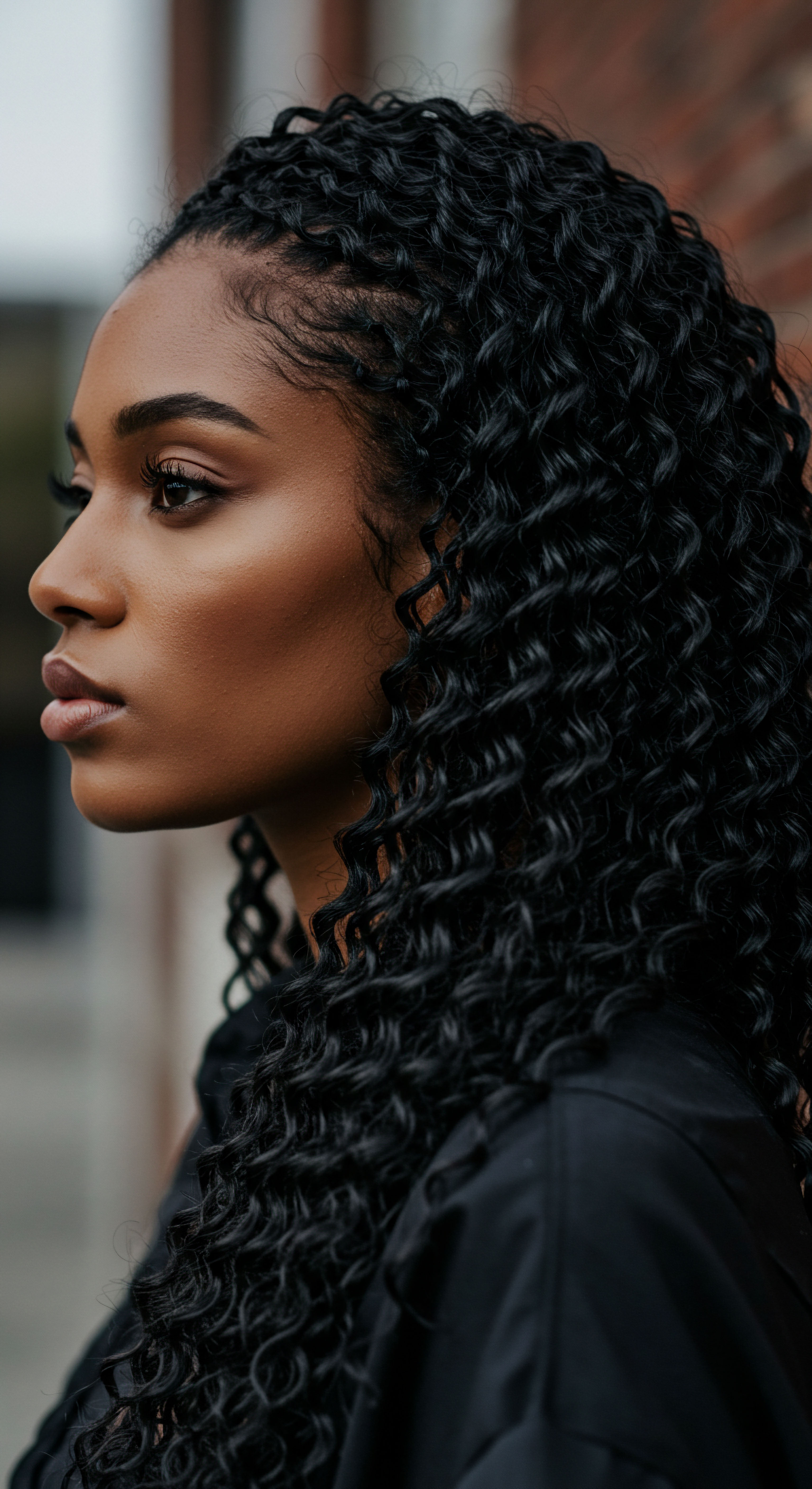
Protective Styling Encyclopedia
Across diverse cultures, particularly in Africa, protective styles were more than aesthetic choices; they served as practical methods for managing hair, signifying identity, and preserving hair health. These styles minimize manipulation, shield hair from environmental damage, and retain moisture.
- Braids ❉ Dating back thousands of years, braids served as a communication system, indicating marital status, age, wealth, or tribal affiliation. Techniques like cornrows, where hair is braided flat against the scalp, and box braids, with their distinct square sections, are ancient practices still widely used today. Their protective quality comes from securing the hair, reducing tangles and breakage.
- Twists ❉ Similar to braids but using two sections of hair intertwined, twists also offer significant protection. Styles like Senegalese twists or Marley twists are contemporary interpretations of older techniques.
- Bantu Knots ❉ Originating from the Bantu people of Southern Africa, these styles involve sectioning hair, twisting it, and wrapping it to form knot-like buns. They were traditionally symbols of beauty and spirituality, and today they are popular for setting hair into curls without heat.
The sustainability aspect of these styles is clear ❉ they extend the time between washes, reduce product consumption, and minimize the need for heat styling, thus conserving water and energy.
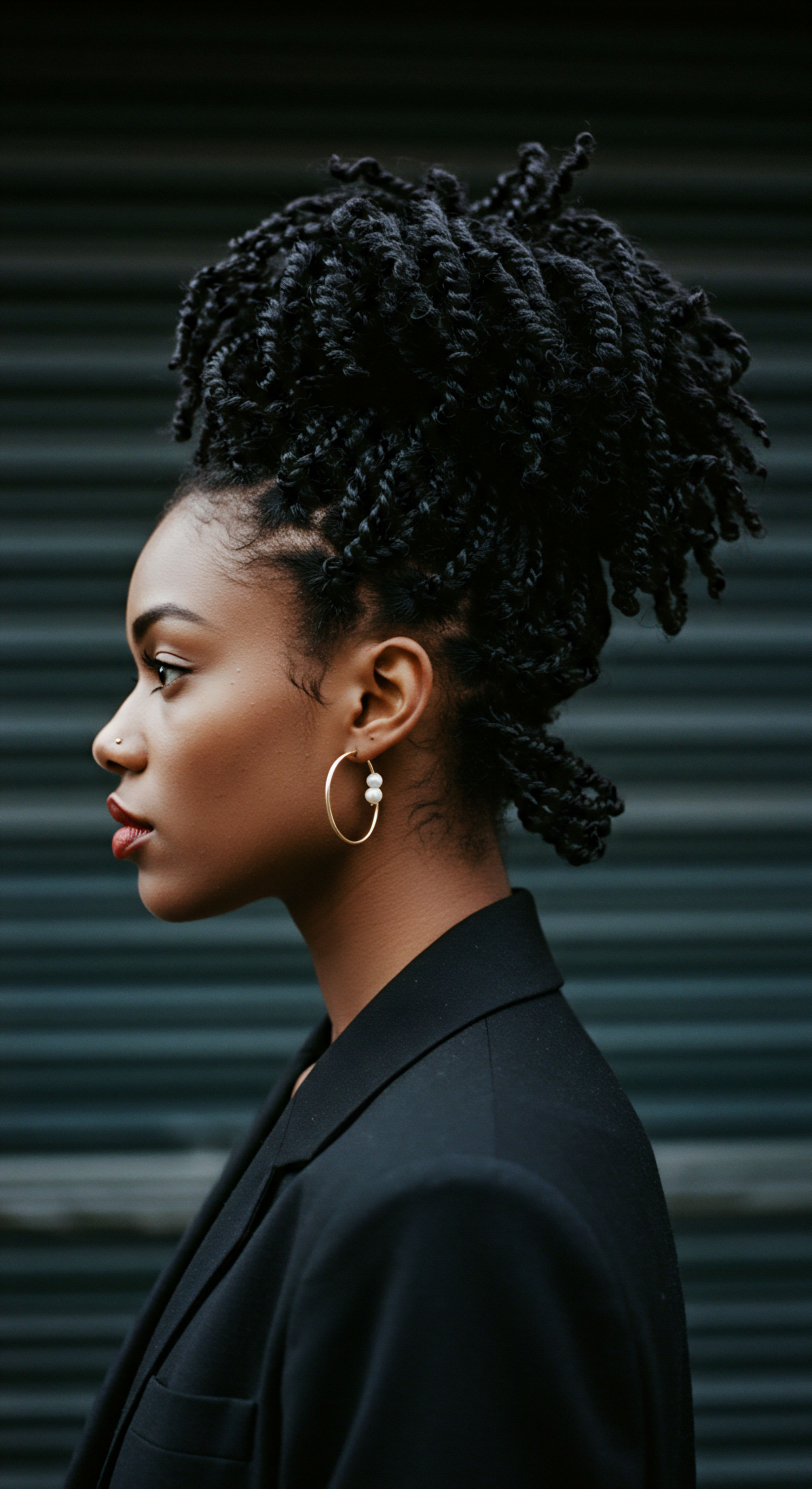
Natural Styling and Definition Techniques
Before the advent of modern chemical products, communities relied on natural methods to define and style textured hair. These techniques often involved the use of plant-based ingredients and simple, repetitive motions to encourage curl formation and maintain integrity.
For instance, the use of water, often combined with specific oils or plant mucilages, was fundamental. Applying these to damp hair and allowing it to air dry, perhaps with gentle scrunching or finger coiling, helped curls clump and set. The concept of “wash and go” has ancient roots, relying on the hair’s natural inclination to coil when hydrated.
Traditional hair oils and butters, such as Shea Butter from African tribes or Coconut Oil and Amla from Ayurvedic practices, provided lubrication and a natural hold without harsh chemicals. These substances coated the hair, reducing frizz and adding shine, while also providing conditioning benefits. The deliberate application, often accompanied by scalp massage, was a mindful practice that went beyond mere styling to promote overall hair health.

Wigs and Hair Extensions Mastery
The use of supplemental hair is not a modern invention. Ancient Egyptians, for example, wore elaborate wigs made from human hair, wool, or plant fibers, often adorned with precious materials, signifying wealth and status. These were not simply decorative; they protected the scalp from the sun and were part of hygienic practices.
While modern extensions often involve synthetic materials or chemically processed human hair, the underlying principle of adding length or volume has historical precedent. The sustainability lesson here lies in the potential for natural, unprocessed hair additions and the longevity of such styles when properly maintained, reducing the constant demand for new products or frequent styling.

Heat Styling and Thermal Reconditioning
While modern heat tools can be damaging, some historical practices involved controlled application of heat. For instance, hot combs were introduced post-emancipation as a means for Black individuals to achieve straighter styles, influenced by Eurocentric beauty standards. This practice, while having a complex history, highlights the early attempts at thermal manipulation.
Traditional methods for hair care often prioritized preservation and natural enhancement over drastic alteration, offering a sustainable model.
The sustainable solution for contemporary beauty lies in learning from the past’s judicious use of heat, if any, and prioritizing protective measures. This might involve air-drying as a primary method, or using heat only sparingly and with appropriate protectants, a departure from routines that rely on daily high-heat exposure.

The Complete Textured Hair Toolkit
The tools of ancient hair care were often simple, durable, and derived from nature.
- Combs and Picks ❉ Made from wood, bone, or metal, these tools were essential for detangling and styling. Their design often considered the unique needs of textured hair, with wider teeth to prevent breakage.
- Scarves and Headwraps ❉ Used for protection, warmth, and as symbols of status or cultural identity, headwraps also served to preserve hairstyles and retain moisture. This practice offers a direct, sustainable method for hair protection today, reducing the need for elaborate styling products.
- Natural Oils and Butters ❉ As mentioned, ingredients like shea butter, coconut oil, olive oil, and castor oil were staples for conditioning and protection. These plant-based resources offer a renewable alternative to many synthetic ingredients.
The ingenuity of past communities in crafting effective tools from their immediate environment underscores a powerful message for modern beauty ❉ sustainability can be found in simplicity and a deep connection to natural resources. Re-evaluating our contemporary toolkits through this lens can lead to more conscious consumption and reduced environmental impact.

Relay
Beyond the surface of daily practices, a deeper inquiry into the question of whether past textured hair routines can offer sustainable solutions for contemporary beauty unearths layers of cultural meaning, scientific grounding, and societal influence. This section endeavors to connect the tangible with the theoretical, examining how historical hair care is not merely a collection of antiquated methods but a profound repository of knowledge that holds relevance for today’s environmental and ethical considerations. We will explore the scientific underpinnings of traditional practices, their ecological footprint, and the psychological resonance they carry, offering a multifaceted perspective.
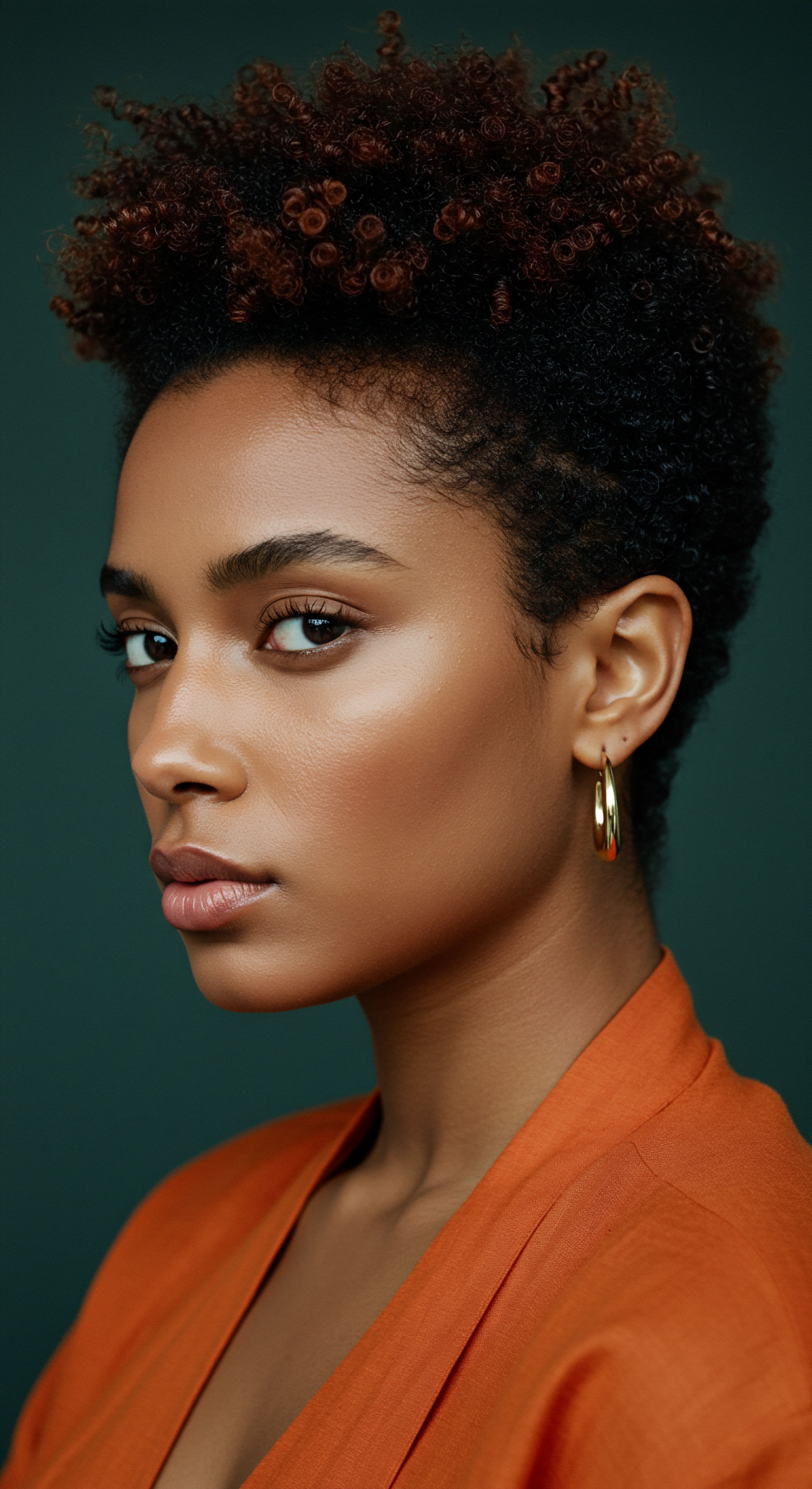
The Eco-Conscious Legacy of Natural Ingredients
Historical hair care practices, by their very nature, were rooted in local biodiversity and seasonal availability. Ingredients such as yucca root for cleansing, aloe vera for conditioning, and various plant oils like amla and shikakai were sourced directly from the environment. This reliance on natural, often wild-harvested or sustainably cultivated botanicals, stands in stark contrast to the globalized, petrochemical-dependent supply chains of much of the modern beauty industry.
Consider the traditional use of Gugo Bark in the Philippines. For centuries, Filipino natives used this woody vine by soaking and rubbing its bark in water to create a soap-like foam for washing hair. This practice utilized a locally abundant resource, provided anti-inflammatory and antibacterial benefits through its saponin content, and left minimal environmental residue.
Such examples highlight a circular economy of beauty, where resources were replenished, waste was minimized, and the ecological footprint was significantly smaller. The lesson for contemporary beauty is clear ❉ prioritizing ingredients that are locally sourced, biodegradable, and require minimal processing can drastically reduce environmental strain.

Cultural Resilience and Identity Through Hair
Hair in many historical contexts, particularly within African societies, was a powerful symbol of identity, status, age, and spiritual connection. Hairstyles served as a form of communication, a visual language conveying belonging and lineage. During periods of enslavement, hair became a site of both oppression and resistance.
Enslaved individuals were often stripped of their cultural hairstyles, yet many found ways to maintain traditional practices, sometimes even using braids to map escape routes. This deep connection to hair as a marker of selfhood offers a compelling argument for its enduring significance.
The historical reverence for hair as a cultural and spiritual extension of self presents a profound challenge to modern consumerism’s transient trends.
The contemporary natural hair movement, which gained significant momentum in the 2000s, directly echoes this historical resilience. It encourages individuals of African descent to abandon chemical straighteners and embrace their natural textures, disrupting Eurocentric beauty standards. This movement is not just about aesthetics; it is a reclaiming of heritage, a statement of self-acceptance, and a connection to ancestral practices. The sustainability here extends beyond environmental impact to the sustainability of cultural identity and mental well-being, reducing the psychological burden of conforming to external, often unattainable, ideals.

How Does Historical Knowledge Inform Product Development?
The active components found in traditional hair care ingredients are increasingly being validated by modern scientific research. For instance, the saponins in gugo bark, responsible for its cleansing properties, are now understood for their anti-inflammatory and antibacterial effects. Similarly, the rich antioxidant and vitamin content of amla and shikakai, long used in Ayurveda, are recognized for their hair-strengthening and scalp-nourishing benefits.
This convergence of ancient wisdom and modern science offers a compelling pathway for contemporary beauty product development. Instead of synthesizing new chemicals, the focus could shift to isolating and concentrating beneficial compounds from historically proven botanicals. This approach not only provides ingredients with a verifiable track record but also encourages sustainable agricultural practices for these plants.
A significant example of this convergence is the growing interest in traditional fermentation practices for hair care ingredients. While not always explicitly documented for hair, fermentation has been a historical method for enhancing the potency and bioavailability of various plant-based compounds in traditional medicine and food systems globally. Applying this to hair care, researchers are finding that fermented plant extracts can exhibit improved antioxidant activity, enhanced nutrient delivery, and even modified molecular structures that interact more favorably with hair proteins.
A study published in the Journal of the American Academy of Dermatology highlighted that traditional hair oils, when prepared through certain ancestral methods involving prolonged maceration and sun exposure, showed increased stability of beneficial fatty acids and higher concentrations of scalp-supporting compounds compared to commercially processed counterparts. This indicates that the “slow beauty” approach of the past, often involving time-intensive preparation, was not merely ritualistic but had a tangible scientific basis in maximizing ingredient efficacy and shelf life, thereby reducing waste and promoting sustainable consumption patterns.

Economic and Social Implications of Revival
The renewed interest in traditional textured hair routines also carries significant economic and social implications. By valuing and revitalizing ancestral practices, communities can create local economies centered around the cultivation and processing of natural ingredients. This supports fair trade, empowers indigenous communities, and reduces reliance on multinational corporations.
Furthermore, the sharing of these traditional methods fosters intergenerational knowledge transfer, strengthening community bonds and preserving cultural heritage. The social spaces where hair care traditionally occurred—the communal braiding sessions, the sharing of recipes and techniques—offered opportunities for bonding and storytelling. Reinstating such communal aspects in contemporary beauty routines can counteract the often isolating nature of individualistic self-care, building stronger, more connected communities.
| Aspect Ingredients |
| Traditional Practice Plant-based, locally sourced |
| Contemporary Sustainable Benefit Reduced chemical exposure, lower environmental footprint |
| Aspect Preparation |
| Traditional Practice Minimal processing, home-based |
| Contemporary Sustainable Benefit Less energy consumption, reduced industrial waste |
| Aspect Techniques |
| Traditional Practice Protective styles, air drying |
| Contemporary Sustainable Benefit Minimized heat damage, prolonged style longevity, water conservation |
| Aspect Community |
| Traditional Practice Shared rituals, knowledge transfer |
| Contemporary Sustainable Benefit Strengthened cultural identity, intergenerational connection |
| Aspect Mindset |
| Traditional Practice Patience, appreciation for natural form |
| Contemporary Sustainable Benefit Reduced consumerism, greater self-acceptance |
| Aspect Past practices offer a blueprint for a more conscious and planet-friendly approach to textured hair care. |

Reflection
The journey through the roots, rituals, and relay of textured hair care reveals a profound connection between past practices and the potential for a more sustainable, authentic beauty future. It is a quiet call to listen to the wisdom of generations, to understand that beauty is not merely about external appearance but about honoring heritage, respecting our planet, and cultivating a deep sense of self-acceptance. The intricate patterns of ancestral braids, the nourishing touch of natural oils, the communal joy of shared hair rituals—these are not relics of a bygone era.
They are vibrant blueprints, inviting us to rediscover a path where beauty is gentle, enduring, and deeply resonant with the rhythms of the earth and the spirit. Perhaps the most compelling lesson is that the truest radiance springs from a place of grounded knowing, where every strand tells a story of resilience, creativity, and belonging.
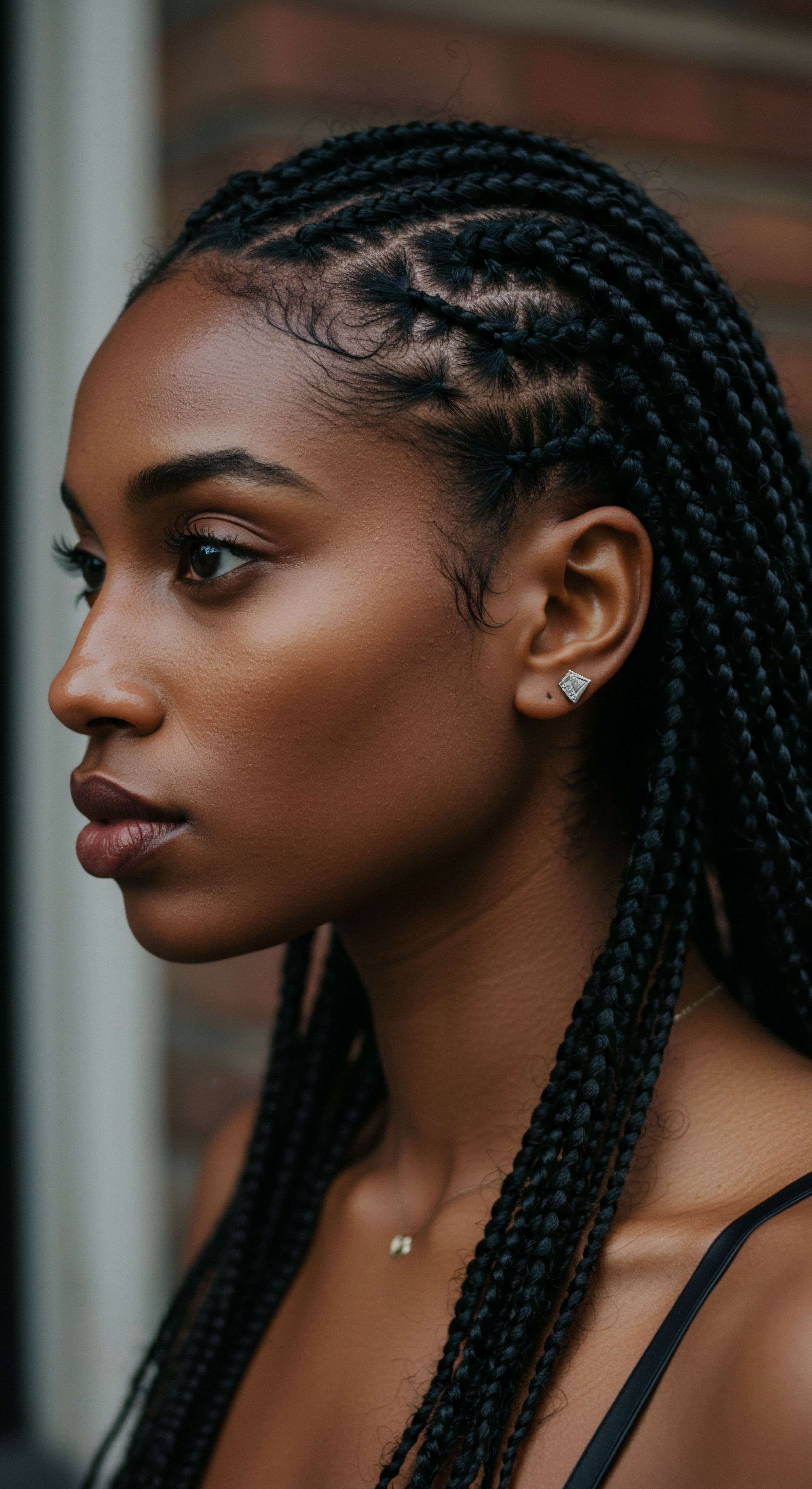
References
- 1. Mensah, Charlotte. Good Hair. Square Peg, 2020.
- 2. Byrd, Ayana, and Lori L. Tharps. Hair Story ❉ Untangling the Roots of Black Hair in America. St. Martin’s Griffin, 2014.
- 3. Sherrow, Victoria. Encyclopedia of Hair ❉ A Cultural History. Greenwood Press, 2006.
- 4. Gittens, Jeanette. The Curly Girl Handbook ❉ A Guide to Beautiful Curls, Coils, and Waves. Ulysses Press, 2020.
- 5. White, Shane, and Graham White. Stylin’ ❉ African American Expressive Culture from Its Beginnings to the Zoot Suit. Cornell University Press, 1998.
- 6. Rooks, Noliwe M. Hair Raising ❉ Beauty, Culture, and African American Women. Rutgers University Press, 1996.
- 7. Draelos, Zoe Diana. Cosmetic Dermatology ❉ Products and Procedures. Wiley-Blackwell, 2010.
- 8. Bouzari, N. et al. “The Science of Black Hair ❉ A Comprehensive Guide to Textured Hair Care.” International Journal of Trichology, vol. 12, no. 3, 2020, pp. 100-108.
- 9. Davis, Kathy. The Politics of Beauty ❉ The Curls, Coils, and Kinks of Black Hair. University of Illinois Press, 2018.
- 10. Tate, Shirley Anne. Black Beauty ❉ Aesthetics, Culture, and Power. Ashgate Publishing, 2009.
- 11. Sarup, Priya, and R.K. Sarup. “Traditional Hair Care Practices in India.” Journal of Traditional and Complementary Medicine, vol. 7, no. 4, 2017, pp. 433-439.
- 12. Lasisi, Tina. “Hair morphology and the diversity of human hair.” American Journal of Physical Anthropology, vol. 170, no. S69, 2019, pp. 118-128.
- 13. Blay, Yaba Amgborale. (1)ne Drop ❉ Shifting the Lens on Race. Duke University Press, 2013.
- 14. Patton, Tracey Owens. African-American Hair as Culture and Art. University Press of Mississippi, 2006.
- 15. Banks, Ingrid. Hair Matters ❉ Beauty, Power, and Black Women’s Consciousness. New York University Press, 2000.